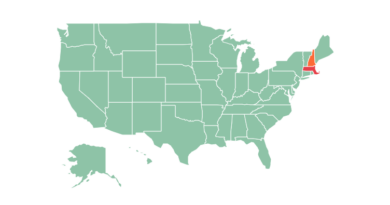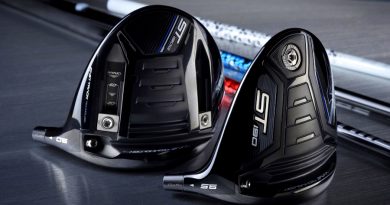The Caveman’s Golf Essentials: Grip Part 2
So I told y’all before ’bout the classic grip, so now we’ll continue to talk ’bout the different types of grips and some tips.
The 3 Most Common Grips
The Overlapping Grip
 The overlapping grip as the name implies requires you to overlap the little finger of your trailing hand over the index and middle fingers of your lead hand. The lead hand thumb should fit in the lifeline of the trailing hand. This is the most popular grip with most players and the grip most likely taught by instructors.
The overlapping grip as the name implies requires you to overlap the little finger of your trailing hand over the index and middle fingers of your lead hand. The lead hand thumb should fit in the lifeline of the trailing hand. This is the most popular grip with most players and the grip most likely taught by instructors.
The Interlocking Grip
 The next most common grip is called the interlocking grip. It has been used by Jack Nicklaus, Tiger Woods, and many LPGA players. Be careful with this grip that the handle does not stray into the palms of the hands. People with small hands, weak forearms and wrists, and beginners in many cases prefer this style of grip. To use the Interlocking grip, take the little finger on the trailing hand and intertwine it with the index finger on the lead hand. The lead hand thumb should fit in the lifeline of the trailing hand.
The next most common grip is called the interlocking grip. It has been used by Jack Nicklaus, Tiger Woods, and many LPGA players. Be careful with this grip that the handle does not stray into the palms of the hands. People with small hands, weak forearms and wrists, and beginners in many cases prefer this style of grip. To use the Interlocking grip, take the little finger on the trailing hand and intertwine it with the index finger on the lead hand. The lead hand thumb should fit in the lifeline of the trailing hand.
Ten Finger Grip (a k a Baseball Grip)
This is the least preferred grip among instructors. It can however help people who experience joint pain, have arthritis, or small, weak hands.Start with a perfect lead hand grip, then place the little finger of the trailing hand close against the index finger of the lead hand. Cover the lead hand thumb with the lifeline of the trailing hand.
Grip Tips
Here are some tips from HowStuffWorks.com to fix yer grip problems
- Squeezing vs. Holding
Gripping the club too tightly, especially with your strong hand, can make your swing cut across the ball instead of connecting with it directly.
A light grip can actually produce better results than a tight grip, because unnecessary muscle tension slows down the speed of your swing.
On the left hand, all the pressure on the grip should be coming from the last three fingers. Neither the forefinger nor the thumb of the left hand should put any pressure on the club.
With both hands, pressure on the club should come from the pads of the hand and the fingers, but never the palms.
- The V’s
The proper golf grip can help eliminate slicing. You just have to remember to look for “the V’s.”
The V’s are the intersection of your thumb and forefinger on both hands. In order to get them pointing the right way, make sure that when you grip the club with your left hand, you can see only two knuckles pointing toward your face .
With your right hand, grip the club with your forefinger pointing directly down the shaft of the club. Grip the club with your two middle right fingers and place the pad of your right thumb directly over your left thumb.
Last, wrap your right forefinger around the club. When you look down at your hands, the V’s formed by the thumb and forefinger of both hands should be aligned properly.
- Club and Hand Alignment
Proper alignment of the golf club and your hands is crucial. When you have it nailed down, you can work on other aspects of your game, confident that you’ll be able to produce more consistent swings. Without it, accurate shots will be few and far between.
When your left hand grips your club correctly, it should cover up the end of the club completely. The wrist must be on top of the grip of the club.
You can have the most natural grip in the world, but if it’s not aligned with the club face, you won’t get a good shot. Before addressing the ball, look down the length of your club to make sure your grip and the club face are in proper alignment. This way, when you hold the club, the face is square with the ball.
- Proper Equipment
Worn-out club grips can be slick, causing your grip to slip or making you hold on too tightly.
Grips that are too large cause your hands to react too slowly to your swing. Grips that are too small cause your hands to overreact. Either way, your shot won’t go straight.
The only thing between you and your golf club besides the grip is your glove. While some golfers do fine without one, having a good golf glove on hand is another way to reduce slippage and increase consistency in your shots. Most gloves are made of leather and are worn on the hand opposite the one that is dominant.
Go to Rock Bottom Golf to improve yer equipment without breaking the bank!
If you’re still havin’ poor shots, check out this list for adjustments:
Weak left hand: Slices, high short shots, difficulty hinging at top, casting, some shanks.
Strong right hand: Hooks, low ball flight, long pulls, flat backswing, topping, drop kicks.
Weak right hand: Over the top, getting in front of the ball, pulls and slices.
Strong left hand: Generally solid shots that might fly low and long, occasional hooks.
Pressure too tight: Slicing, some topping.



